Matt Turecamo DPC-14
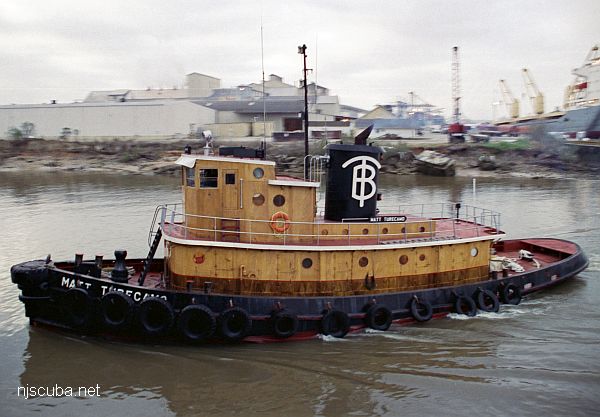
- Type:
- artificial reef, tugboat, U.S. Navy
- Built:
- 1943, Lawley & Sons, Neponset, MA as DPC-14, later Matt Turecamo
- Specs:
- ( 86 ft ) 146 gross tons
- Sponsor:
- Sean Maubray, FCO
- Sunk:
- Thursday October 17, 1996 - Sea Girt Artificial Reef
- GPS:
- 40°07.514' -73°56.465'
- Depth:
- 80 ft, main deck at 65 ft
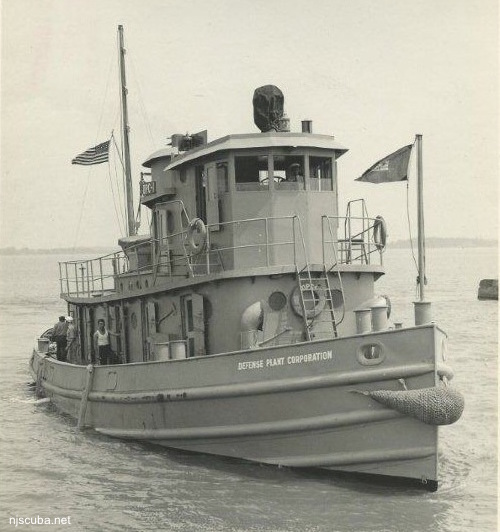
Built in 1943, by George S. Lawley and Sons of Neponset, Massachusetts ( hull #1302 ) as the DPC-14 for the United States Army, an Army "ST"-class tugboat. The tug was later transferred to the Wartime Shipping Authority and re-designated WSA-1. In the late 1940s, the tug was sold and renamed Frank W. Spencer. She was eventually acquired by Turecamo Maritime where she was renamed Matt Turecamo.
tugboatinformation.com
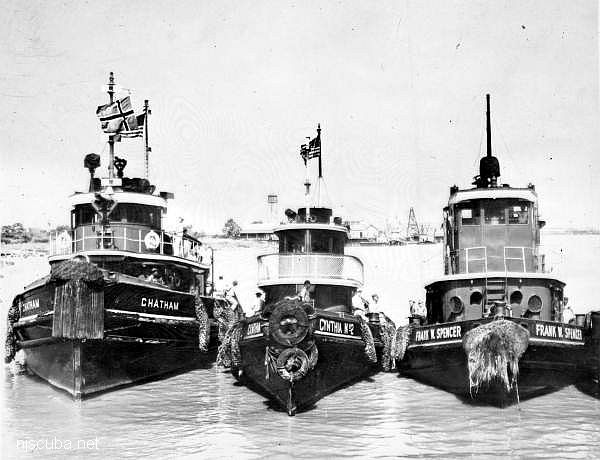
Turecamo Coastal and Harbor Towing Corporation
Turecamo Coastal and Harbor Towing Corporation was founded by Bartholdi "Barney" Turecamo, who immigrated from Isola Lipari, a small island between the northern coast of Sicily and the southern tip of Italy. As an immigrant Turecamo found work in road construction around New York. Turecamo began his own road construction company. It is reported that at one time the company was doing a number of marine-related jobs and utilized a company called Gallagher Towing.
On one occasion in 1927, Gallagher Towing was late retrieving a barge of material for Turecamo. Barney Turecamo called him to complain. Gallagher claimed the tug was on the way, then slammed the phone down, which did not hang up. Supposedly, Gallagher then said to someone in his office "Screw that Italian S-O-B, we'll get there when we get there." Barney Turecamo overheard this. The next day he acquired his first tug, to haul roadstone from the wharves in Manhattan to his plant in Brooklyn. ( I can just imagine the old Sicilian's reaction, I'll bet he had a lot of choice words that I couldn't print here. And I'm sure this is a polite paraphrasing of what Gallagher actually said. -- ed. )
His son, Bart Turecamo, added more tugs and expanded the operation into the New York Harbor trade. The third generation, Bart Turecamo Jr. succeeded his father, who died in 1983. In 1978, Turecamo acquired the White Stack Maritime Corporation from Wayland T. Coppedge Jr., who had previously sold his Jacksonville, Florida-based company, Florida Towing Company, to the Moran Towing Corporation in 1976.
The wood-grain paint job was a distinguishing mark of a Turecamo tug, although a number of other tug companies in the harbor had similar wood-grain paint jobs also, such as Dalzell. Turecamo was the last company in New York harbor to have wood-grained boats. There was a small group of shore-side painters that would do that work. First, a base coat was applied and allowed to dry then a color coat over that. The color coat would be combed with steel combs of varying length and sizes of the individual comb points. The individual doing the work would twist and bend the comb as he pulled it through the wet topcoat to create the wood grain effect, giving the paint an authentic wooden look when completed.
Above the handrail it was a light color grain and dark below. The handrails around the middle of the deckhouse were painted red and a stripe covered any area without a handrail. Once it was all completed the wood-grain job would be covered with several coats of spar varnish, which would protect the paint. Usually each spring the varnish would be sanded lightly and another coat applied. Towards the later days of the company newer boats joining the fleet were painted a buff color and the older boats were painted the same buff instead of receiving a new grain job.
In the summer of 1998, Turecamo Maritime and their affiliated company, The White Stack Maritime Corporation merged with the Moran Towing Corporation of Greenwich, Connecticut. Moran then added Charleston, South Carolina to their thirteen ports of service on the East Coast and Gulf Coast. The Moran Towing Company of Charleston, South Carolina is the successor company to White Stack Maritime Corporation, which has had a presence at the port of Charleston since 1882 and was also acquired by the Moran Towing Corporation as part of the merger.
-- Hugh Ware, Captain Christopher Roherig, Captain Eric Takakjian
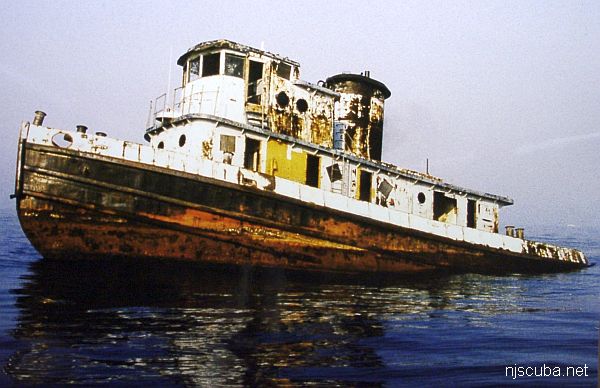
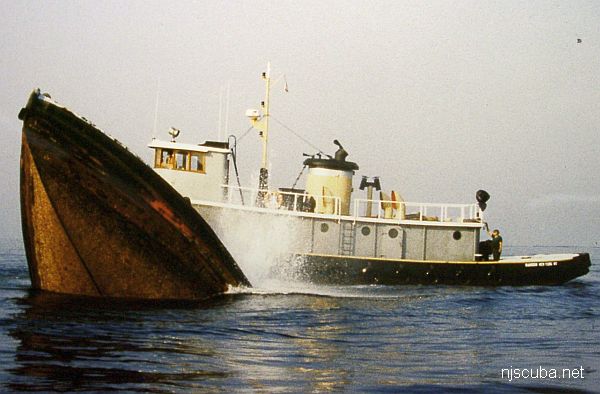

This has become one of the most popular wrecks in the area, especially for training dives. A large tugboat, it is upright on a sandy bottom close to shore and is almost completely intact. With the addition of several APCs and some damage to the wreck after sinking, this site has become an underwater playground and is an ideal site for beginners. This wreck seems to lie in an area of unusually good visibility for an in-shore site.
Off the stern, about 15 yards are the five APCs, several of them upside-down - the "FCO Reef", also sunk in 1996. You may find a permanent line to guide you to the closest one. Each APC forms a miniature cave. Over the winter of '99-'00 something swiped away the pilothouse, leaving just the smokestack. The crushed remains of the pilothouse lie upside-down a short distance off to the port side of the wreck, with smaller wreckage hard by the starboard side. The rudder and propeller may still be seen in a large washout under the stern.
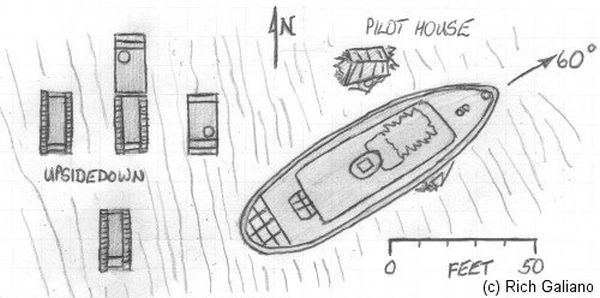
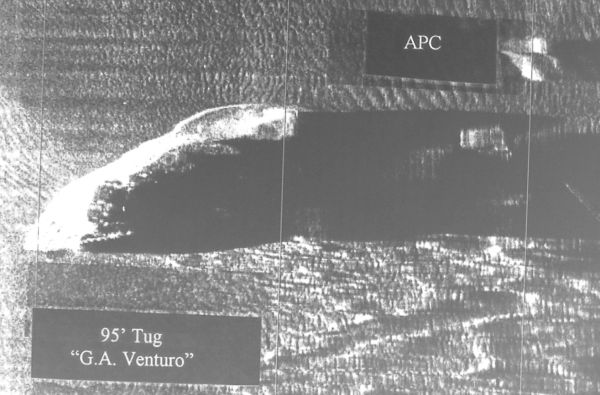
Side-scan sonar image of the tugboat and APCs, flipped to match the drawing above. My drawing turns out to be not too bad.

Looking up the bow at the pilothouse, when it was still on the wreck. Most of the superstructure is gone now, I suspect it was hit by a deep-laden barge.
The interior of the wreck was just as interesting. The tug is easily penetrated through large cutouts on either side, which lead directly to the large and impressive diesel engine. It is easy to swim through the spacious engine room from one side to the other, or drop down and grub around in the silt.
Many fish are to be found, including some fair-sized blackfish and Sea Bass. Spearfishermen would do well to investigate the APCs and the wreckage of the pilothouse. Around the top of the deckhouse, you may find large triggerfish munching on the mussels, as well as huge schools of baby jacks. Be sure to take a look down the square opening in the top of the stack.
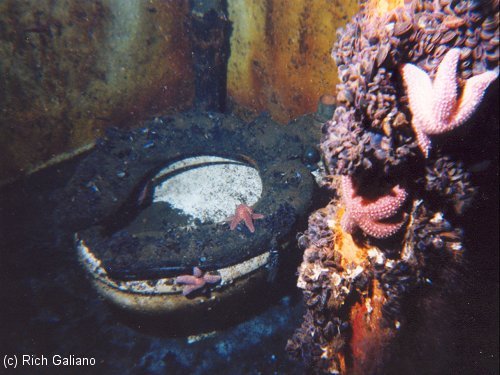
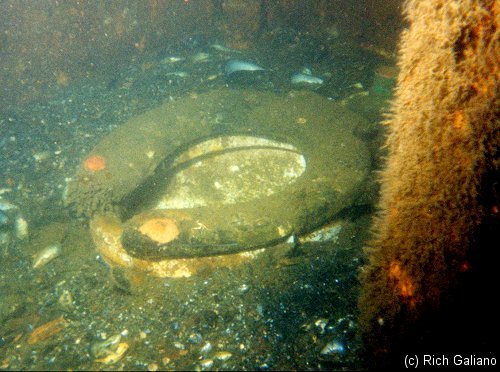
Look at the difference between these two shots; the first in 1997, not long after the sinking, and the second in 2000. Hydroids have replaced mussels, and the floor is covered with a foot of silt. In 2002, the "head" was gone. In fact, the entire interior of the deckhouse was demolished.
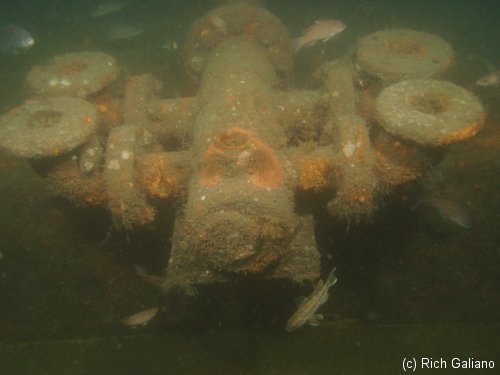
Just aft of the pilothouse on the upper deck - my guess is that this is a high-pressure water manifold. Many tugboats carry fire-fighting equipment.


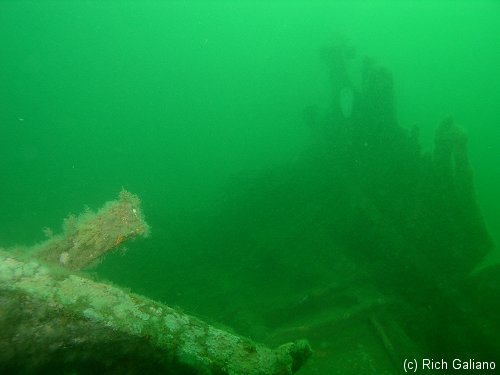
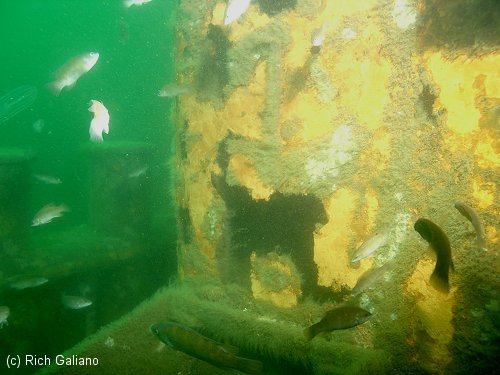
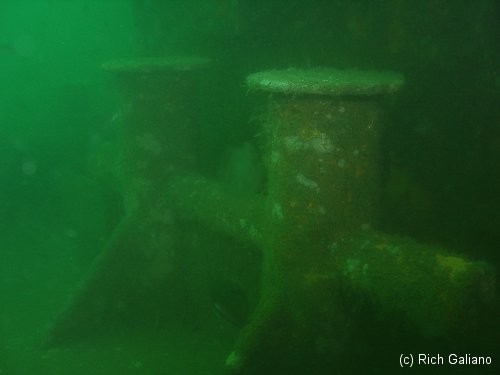
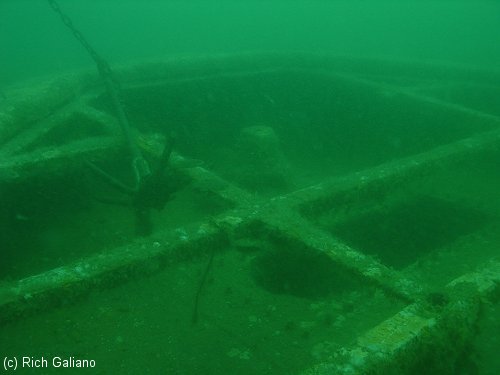
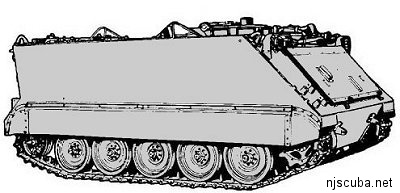
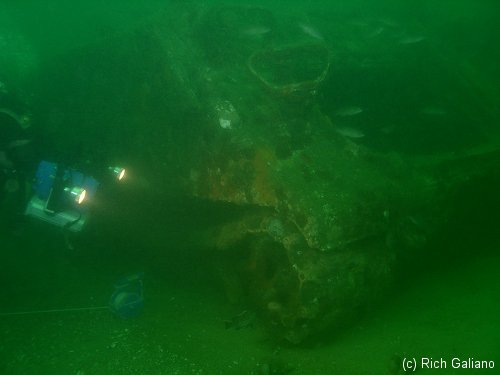

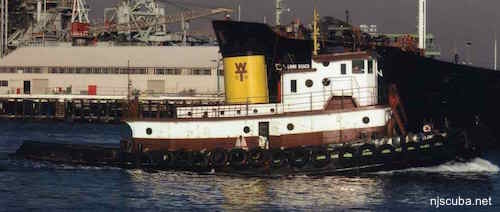
A sister - the layout of the doors and windows is a good identifier of a standard DPC-type tug.

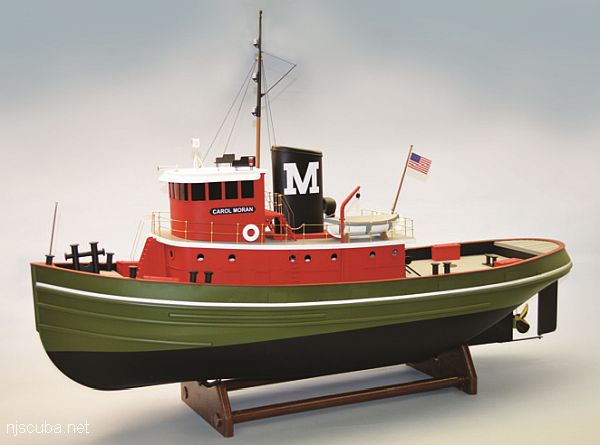
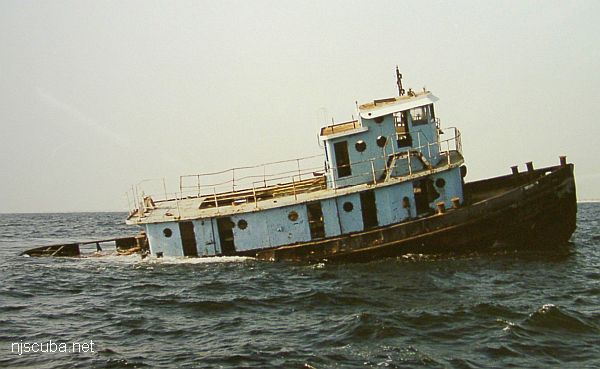
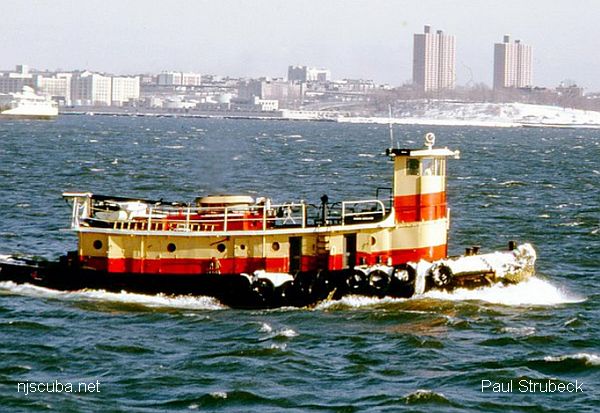
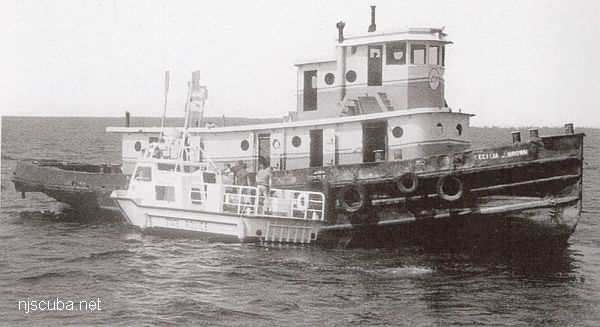
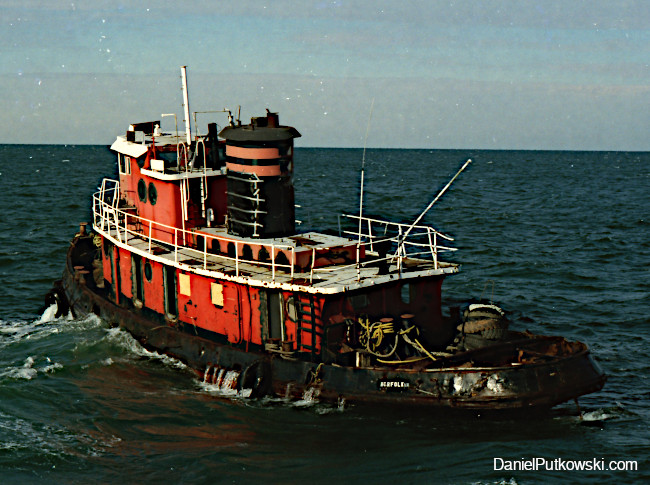
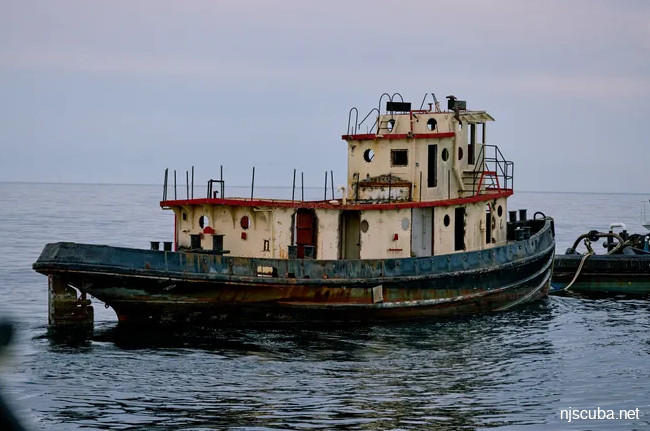
Questions or Inquiries?
Just want to say Hello? Sign the .